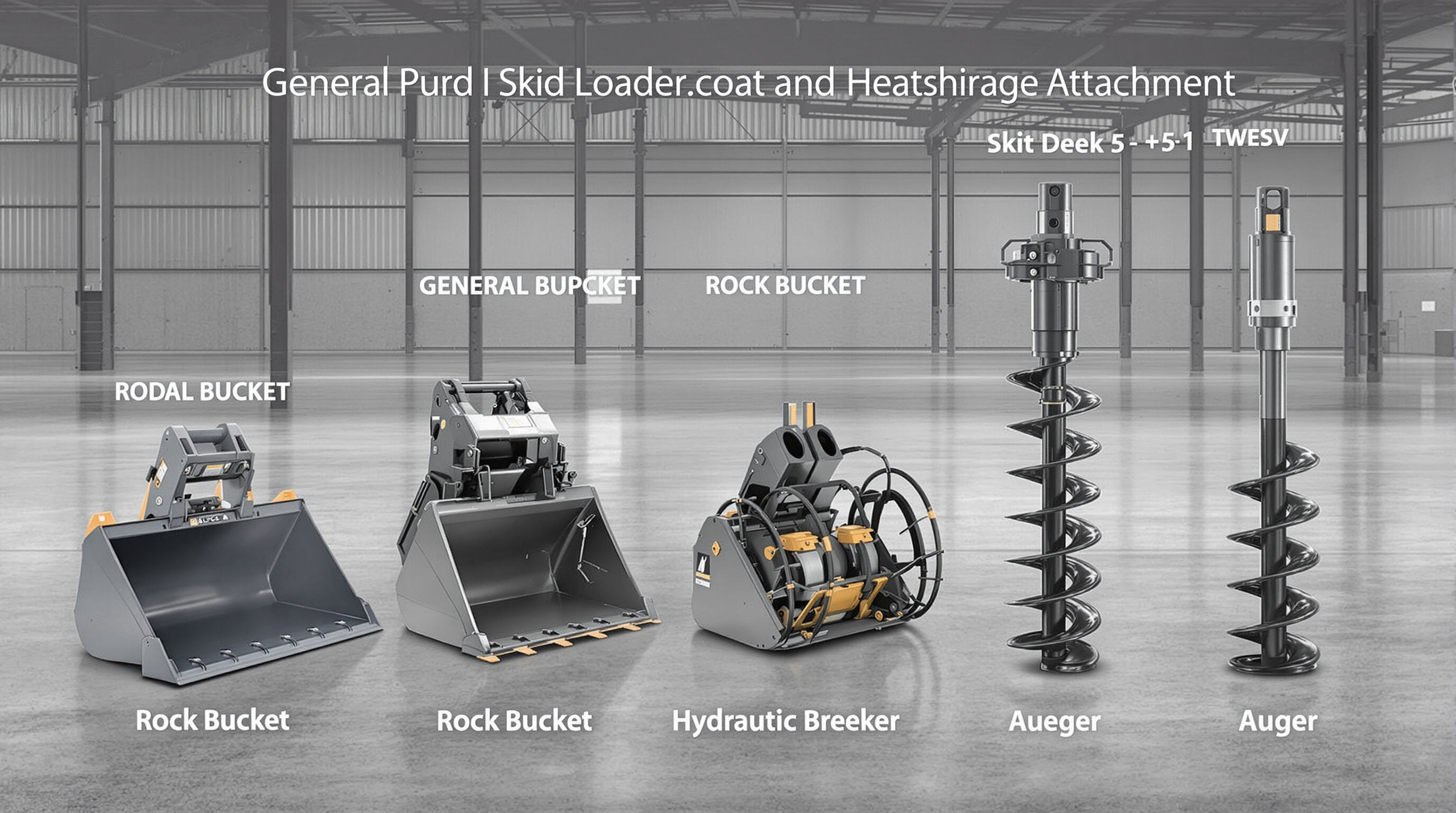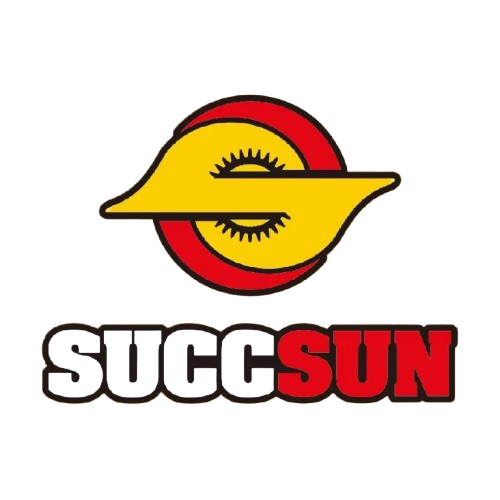Förtydliga skjutlastarens användningsområde och krav på tillbehör .
Bestäm specifika arbetsbehov för att välja rätt tillbehör till skjutlastaren
För att komma igång, ta reda på ungefär 20 till 30 vanliga arbetsuppgifter som framkomstmaskinen hanterar dag ut och dag in. För de yrkesverksamma inom landskapsbranschen som transporterar allt från 2 000 upp till 5 000 kubikmeter överjord varje år, fungerar det ganska bra att kombinera standardmatarhinkar med stubbhakar. Rivningslag tar dock en annan väg och använder i stället kraftfulla hydrauliska hammare som klarar mellan 1 500 och 3 000 slag per timme. Ett bra tips är att skapa någon sorts arbetsdiagram som visar hur ofta vissa uppgifter förekommer, vilken typ av material som ska hanteras (slipande material jämfört med packad jord), samt tar hänsyn till miljöförhållanden som t.ex. sluttningar inte brantare än 15 grader och tillgängligt huvudutrymme vid val av utrustning.
Anpassa utrustningens storlek och kapacitet efter projektets omfattning och arbetsbelastning
Opassade utrustningar bidrar till 17% av hydraulsystemens driftstörningar (Equipment Today 2023). För skottkärror med en märklig driftkapacitet (ROC) på 2 500 lb bör undvika kärl som är bredare än 96" eller som överskrider 1,2 kubikyard i volym.
Vanliga arbetsmiljöer och deras optimala skottkärranordningar
- Stadsnaturbruk : Lågprofils pallgafflar på 72" (markfrihet <12") kombinerade med svepare på 84"
- Kraftiga gruvdrift : Rockbägare av AR400-stål med förstyvnade kanter, tillverkade av ½" tjockt stål, kombinerade med dubbelcylindergrepp
- Vinterdrift : Snedställda skjutplattor (stål i 12–14 tums tjocklek) med utbytbara polyuretan-kantspetsar
Utforska nyckeltyper av skottkärranordningar efter funktion

Allmäna kärl: Jord, verktyg, snö och fleranvändningsalternativ
Mest material som flyttas runt på arbetsplatser görs fortfarande med allmänta skopor, vilket utgör väl över hälften av all rutinarbete. När man gräver genom jord eller transporterar grus slår inget de tunga skopor för jord som är tillverkade av 3/16 tum tjock slitstark stål, de tål helt enkelt grov behandling bättre. För dagliga operationer där utrymmet är begränsat men kapaciteten ändå behöver vara god, är modeller i utilitetskivor mellan en och två kubikyard perfekta – de balanserar mellan att kunna ta med tillräckligt mycket utan att fastna i hörn. Och låt oss tala om vintersäsongen – dessa särskilda snöskopor är utrustade med skarpa kurvade kanter och framsida i vinkel som håller allt inomhus medan de rensar bort 15 till 20 ton i timmen när temperaturen sjunker under fryspunkten.
Specialskopor: Sten, stubbe, skelett och betongplacering
Specialskopor är konstruerade för extrema förhållanden:
- Bergskopor använder 1/2†AR400-stål och utbytbara tänder för att tåla skräp av samma kvalitet som i en stenbrott.
- Stumpspadar har 30°-vinklade blad och förstärkta sidoplåtar för rotextraktion.
- Skelettburkar särskiljer fina material som mull från större spillror, vilket förbättrar sorteringseffektiviteten med 40 % i trädgårdsarbeten.
Hydrauliska tillbehör: Greppverktyg, brytverktyg, dikegropsvärk och borrspetsar
Hydrauliska verktyg utökar hjullastarens funktionalitet över specialiserade applikationer:
| Bilaga | Flödeskrav (GPM) | Huvudsaklig användning |
|---|---|---|
| Hållband | 15–25 | Trähantering |
| Brytare | 20–35 | Betongrivning |
| Med en bredd av högst 150 mm | 10–20 | 12”–36” hålborrning |
Enligt en utrustningsstudie från 2023 slutför operatörer som använder hydrauliska borrspetsar uppgiften att gräva hål för stolpar tre gånger snabbare än manuella metoder. Brytverktyg som levererar 1 500–2 500 ft-lbs kraft fragmenterar betong effektivt utan att kompromissa med stabiliteten. Bekräfta alltid att hjullastarens hydraulflöde matchar tillbehörets krav för att upprätthålla prestanda.
Säkerställ kompatibilitet med din truckmodell och kapacitet
Att välja kompatibla tillbehör är avgörande för säkerhet och effektivitet. Komponenter som inte matchar kan minska produktiviteten med upp till 40 % och öka olycksrisken med 28 % (enligt ISO 6165:s säkerhetsriktlinjer).
Anpassa tillbehörets monteringssystem till din truks snabbkopplingstyp
Universella snabbkopplingssystem är standard på 65 % av moderna truckar, men egendesignade system som vertikalstifts- eller kilelåssystem kräver specifika adaptorer. Bekräfta om din maskin använder gränssnitt certifierade enligt ISO 17025 eller tillverkarspecifika geometrier. Till exempel kan tillbehör för radialupphöjning inte säkras ordentligt på vertikalupphöjningsmodeller, vilket skapar instabilitet vid tunga lyft.
Verifiera lyftkapacitet, maskinstorlek och hydraulflödeskompatibilitet
Truckar indelas i tre storleksklasser, var och en lämplig för olika tillbehör:
| Maskinstorlek | Max ROC* | Hydraulflödesintervall | Lämpliga tillbehör |
|---|---|---|---|
| Småram | ≤1 550 lbs | 15–23 GPM | Pallgaffel, snöskovlar |
| Medium-ram | 1 750–2 200 lbs | 20–30 GPM | Borrkärror, grävmaskiner |
| Storram | ≥2 200 lbs | 30–40 GPM | Kallplanerare, bergtaggare |
*Märklig effektiv kapacitet (ROC)
Högflödes hydraulik (30+ GPM) krävs för kraftintensiva verktyg som mulchare och stubbfräsar. Standard system saknar vridmoment för kontinuerlig drift. Kontrollera alltid din hjullastares hydrauliska PSI mot tillbehörets specifikationer - redan en 10% differens kan tredubbla slitagehastigheten.
Utvärdera konstruktionens kvalitet och hållbarhet hos hjullastartillbehör
Utvärdera ståltjocklek, sträckgräns och strukturell förstärkning
Hållbarhet börjar med materialkvalitet. Välj tillbehör tillverkade av stål ≥0,35 tum tjockt med en sträckgräns på 50 000+ PSI för att motstå deformation. Förstärkta belastningszoner - såsom gångjärnsskivor och länkar till lastarmarna - drar nytta av 15% tjockare stål, vilket minskar risk för sprickor med 40% under schaktning.
Slitstavar, kärlfodral och designelement som förlänger livslängden
Utbytbara komponenter minskar markant långsiktig kostnad:
- Hardox® slitstavar tredubbel livslängd jämfört med standard kolstål i slipande förhållanden
- Bultmonterade kantskydd behåller kärlintegriteten vid arbete med betong
- Hydraulcylinderns flerkammersystem förhindrar förorening i fuktiga miljöer
Varför ledande tillverkare säkerställer långsiktig pålitlighet
Topp-tillverkare validerar konstruktioner genom 1 000+ timmar av fälttester. Deras produktionsprocesser använder robotvältsning (≤0,002" precision) och icke-destruktiv provning för att säkerställa hållbarhet. Dessa praxis gör att premiumkomponenter kan uppnå 8–12 års livslängd, jämfört med 3–5 år för budgetmodeller.
Balansera initial kostnad med långsiktig värde och avkastning

Undvik fällan med låg kostnad men hög felkvot hos Skid Loader-tillbehör
Billiga tillbehör tenderar att spara på viktiga delar som ståltjocklek och de hydrauliska tätningarna som håller allt samman. Visst kan dessa budgetalternativ spara cirka 15 till 30 procent från början, men enligt nyligen publicerade branschundersökningar från Construction Equipment Review förra året går de nästan tre gånger snabbare sönder under hårda förhållanden, såsom rivningsarbete eller hantering av stenar. Erfarenheter från verkligheten berättar en annan historia. Entreprenörer som själva stött på detta berättar om hur mycket pengar som går förlorade på grund av projektfördröjningar. När en skopa eller kärra går sönder mitt i ett jobb kan det kosta över 740 dollar bara för att vänta på reservdelar. Dessa oväntade kostnader tar i stort sett ut alla besparingar som gjordes från början.
Beräkna totala ägandekostnaden: Underhåll, slitage delar och produktlivslängd
Beakta dessa ekonomiska faktorer vid val av tillbehör:
| Kostnadskategori | Lågkvalitativt tillbehör | Högkvalitativt tillbehör |
|---|---|---|
| Inledande investering | $5,000 | $8,500 |
| Årlig underhåll | $1,200 | $400 |
| Utbytescykler | Var 18:e månad | Var femte år |
| 10-års total | $34,000 | $12,100 |
Den 65 % lägre långtidkostnaden visar värdet av förhärdade stållegeringar och utbytbara slitaggregat i högspända områden – funktioner som minskar reservedelsutbyten med 83 % i nötande miljöer.
Vanliga frågor
Vilka är de vanligaste orsakerna till hydrauliska systemfel i hjullastare?
Opassande tillbehör står för 17 % av hydrauliska systemfel.
Hur kan jag säkerställa kompatibilitet mellan min hjullastare och dess tillbehör?
Bekräfta att tillbehörets monteringssystem matchar din hjullastares snabbkopplingstyp, lyftkapacitet, maskinstorlek och hydraulflödeskompatibilitet.
Varför är materialkvalitet viktig för hjullastartillbehör?
Hållbarhet börjar med materialkvalitet. Komponenter tillverkade av kvalitetsstål med tillräcklig sträckgräns motstår deformation och har en längre livslängd.
Innehållsförteckning
- Förtydliga skjutlastarens användningsområde och krav på tillbehör .
- Utforska nyckeltyper av skottkärranordningar efter funktion
- Säkerställ kompatibilitet med din truckmodell och kapacitet
- Utvärdera konstruktionens kvalitet och hållbarhet hos hjullastartillbehör
- Balansera initial kostnad med långsiktig värde och avkastning
- Vanliga frågor


